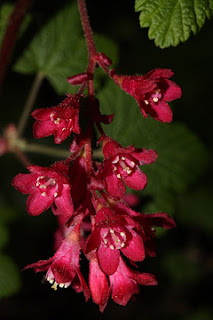Feeding the Mission, in the Western Addition Your reporter squealed like a little girl when she realized she had actually found a potato.
Your reporter squealed like a little girl when she realized she had actually found a potato.By: Heather Smith | July 8, 2010
It starts with a Lutheran Church on fire. St. Paulus at Eddy and Gough burned to the ground in 1995 and has remained a vacant lot ever since. Then, this year, an improbable alliance came together. Case Garver, a 22-year-old Lutheran Volunteer Corps member from Ohio, and Megan Rohrer, a local pastor, were negotiating with local churches to open up unused property in the city for farming.
It was more than just a quaint idea — Rohrer is director of Welcome, an organization that deals directly with the poor, and food banks in San Francisco continue to be stretched to their limit. Rohrer secured permission for the St. Paulus lot. Then came the tricky part.
“Neither of us knew anything about gardening,” says Garver. “Then we found Tree.”
Tree knew how to garden. A Mission resident whose history stretched back decades, Tree had been growing and harvesting food from gardens mostly in the neighborhood, cultivating a group of local gardens and distributing the bounty to a variety of groups. In 2008 he began the Free Farm Stand at Parque Niños Unidos at 23rd and Treat. “People trust him,” says Lauren Anderson, an artist and gardener who runs the foraging nonprofit Produce to the People. “Which means a lot. It’s not easy to invite someone into your backyard, even if it’s just to pick fruit.”
Tree agreed to help run the farm with Anderson and some other nonprofit groups, with the idea that some of the produce would go to the Free Farm Stand in the Mission. The Lutheran synod that owns the church site agreed to cover the water and electrical bills. And so the farming began.
Your average burned-out foundation is not necessarily ideal farmland. The site was sunny, and as Garver puts it, the soil was equal parts sand, KFC buckets, Häagen-Dazs containers and used syringes. When asked if the crew had to use special safety gloves to clear out the soil, Garver deadpans, “It depends on how you define ‛special.’ Or ‛safe.’”
“We did have gloves,” he adds.
“There are so many different urban agriculture groups,” says Anderson. “They all believe in slightly different things: Teaching people how to garden. Getting people community garden plots. Greening the city. Working with youth. Our priority [was] getting food out of the ground and to the low-income people who needed it. The secret was manure. Lots and lots of manure.”
Planting in the basement of a burned-out building turned out to have its advantages — the plants were sheltered from San Francisco’s gale-force winds by the remaining walls. The terrible soil is producing more food than anyone expected.The first harvest at the plot they named The Free Farm — 5.5 pounds of produce — came out of the garden on April 11, just a little over three months after work began. A second mini-stand was established outside and began passing out food to residents of the immediate neighborhood. By the end of June, the free farmers had harvested 784 pounds of produce in six months, the most of any garden in the network supplying the Free Farm Stand.
On a Wednesday afternoon, a volunteer sits outside the farm behind two galvanized tubs of gargantuan, prehistoric-looking collard greens, offering them to slightly confused passersby. The quirks of the landscape are still being discovered — carrots have been challenging, collards and cabbage have done astonishingly well. There is fortune in this: Collards have been one of the most popular crops in both neighborhoods. Attempts to push kale have been met by resistance.
Inside, volunteers are elbow-deep in the dirt, feeling around for the first crop of potatoes. They range from a very enthusiastic visitor from southern Japan to Steve Pulliam, a recent transplant from Atlanta who found the place while walking his dog. When he began, he had no gardening experience. Five months later he is speaking confidently about duck droppings.
“I wanted to be outside. In the sunshine. Not around kids,” says Sarah Hale, a schoolteacher. “So much has happened this year: Haiti, the Gulf. I wanted to do something where I knew that I was doing good. Something small, and effective.”
Anderson, meanwhile, admits to aspirations beyond the small. “This is a terrible, terrible analogy,” she says, jokingly. “But we’re trying to decide if we want to turn this into a franchise.”

























